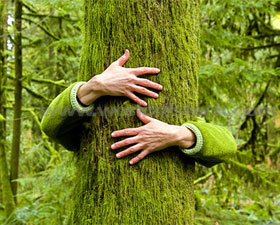Deforestation And Its Effects On The Environment
With the increase in human population, there have been ever-rising demands for converting forests into residential and agriculture areas. As a result, lots of trees are being felled and forests are being cleared, thus destroying the habitat of several species of animals and plants. Such large-scale felling of trees is called deforestation. It results in permanent destruction of forests and woodlands.
Forests are a valuable natural resource. Given below are some of the ways in which forests are beneficial to human beings and the environment.
- Forests provide habitat to a large number of plants, animals, birds, and insects.
- Trees release oxygen, which is needed for survival.
- We obtain useful products like timber, gum, paper, and medicines from forests.
- Roots of trees help to hold the soil in place, preventing soil erosion and landslides.
- Dead plants and trees decompose to form humus, which helps in maintaining soil fertility.
Deforestation refers to the continual degradation of forests due to natural or human-related causes. The main causes of deforestation are
- Requirement of wood,
- Rapid urbanization resulting in conversion of forests to agricultural land, and
- Overgrazing by cattle.
Deforestation may have many adverse effects. Some of them are:
- Soil erosion and desertification
- Destruction of the natural habitat of animals and birds: If forests are destroyed, global climate and local weather may change drastically. This will result in the loss of many species of animals and plants, and biological diversity.
- Large amounts of greenhouse gases such as carbon dioxide, methane, etc., are released into the atmosphere due to deforestation.
- Natural resources such as timber, medicinal plants, fruits, and nuts are depleted due to deforestation.
- Increase in global temperature
- Reduced rainfall
- Floods
- Landslides (in mountainous regions)
Case Study: Chipko Movement
The Chipko movement, launched in the early 1970s, aimed at preventing the cutting of trees in the Garhwal Himalayas.
The villagers hugged the trees and prevented the contractors from felling them. (The Hindi word ‘Chipko’ means ‘to embrace’ or ‘to hug’.)
 The success of the Chipko movement in the hills saved thousands of trees from being felled. Sunderlal Bahuguna, a Gandhian activist and philosopher, played an important role in success of this movement He appealed to Mrs Indira Gandhi, the then Prime Minister of India, which resulted in a 15-year ban on the felling of trees in the Himalayan forests.
The success of the Chipko movement in the hills saved thousands of trees from being felled. Sunderlal Bahuguna, a Gandhian activist and philosopher, played an important role in success of this movement He appealed to Mrs Indira Gandhi, the then Prime Minister of India, which resulted in a 15-year ban on the felling of trees in the Himalayan forests.
Here are some practices that could help in conserving our forests.
- Trees should be planted on a large scale on available land. Large-scale planting of saplings is called afforestation. When this is done on deforested lands, it is called reforestation.
- More forest reserves and botanical gardens should be established.
- Allowing animals to graze on the same patch of land for a long period of time should be avoided. Minimizing overgrazing by animals will go a long way in preventing farmlands from turning barren.
- Measures should be taken to prevent and control forest fires.
- Awareness programmes could be conducted by school children, organizations, and also through print and television advertisements to promote the need to use our forest resources judiciously.
- Since paper is obtained from wood pulp, recycling of paper will also help conserve trees to some extent.